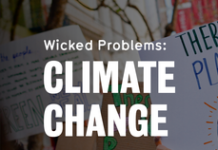
The values shown in this article reflect the status of the COVID-19 pandemic on May 29, 2020 and may differ from current numbers.
Throughout Ontario, the COVID-19 pandemic has been a struggle to contain.
How does Waterloo Region – which includes Waterloo, Kitchener, and the surrounding areas – compare with the rest of the province?
| Areas | Recovery Rate |
| Wellington-Guelph | 88.82% |
| Durham Region | 80.49% |
| Niagara Region | 85.06% |
| Essex-Windsor | 76.86% |
| Simcoe-Muskoka | 79.70% |
| Hamilton | 74.18% |
| Toronto | 71.54% |
| Halton | 72.83% |
| Ottawa | 72.52% |
| Waterloo Region | 70.01% |
| York Region | 71.02% |
| Peel Region | 73.28% |
| Middlesex-London | 52.11% |
| Ontario | 77.10% |
| Canada | 51.30% |
As of May 29, there were 1,099 total confirmed cases in the Waterloo Region, or approximately 0.21 per cent of the region’s population, with Kitchener receiving the highest number of cases. In comparison, Toronto, the most infected region in Ontario, currently has 10,901 cases, making up 40 per cent of Ontario’s 27,210 cases and 0.40 per cent of the city’s total population.
Out of Waterloo Region’s 1,099 cases, 797 have recovered, yielding a recovery rate of approximately 73 per cent. However, the recovery rate in Waterloo Region is quite below Ontario’s overall recovery rate of 77 per cent, as well as Toronto’s recovery rate of 74 per cent.
| Census Divisions | Population (2016) | Confirmed Cases | Recoveries | Deaths |
| Canada | 37,590,000 | 85,092 | 43,649 | 6,453 |
| Ontario | 13,448,494 | 27,210 | 20,983 | 2,230 |
| Toronto | 2,731,571 | 10,901 | 8,086 | 810 |
| Peel Region | 1,381,739 | 4,486 | 3,267 | 274 |
| York Region | 1,109,909 | 2,384 | 1,747 | 202 |
| Ottawa | 934,243 | 1,937 | 1,559 | 240 |
| Durham Region | 645,862 | 1,435 | 1,103 | 173 |
| Halton Region | 548,435 | 635 | 564 | 25 |
| Hamilton | 536,917 | 667 | 467 | 36 |
| Waterloo Region | 535,154 | 1,099 | 797 | 113 |
| Simcoe Muskoka | 479,650 | 468 | 373 | 36 |
| Middlesex-London | 455,526 | 520 | 372 | 52 |
| Niagara Region | 447,888 | 636 | 541 | 59 |
| Essex-Windsor | 398,953 | 950 | 495 | 63 |
| Wellington-Guelph | 222,726 | 383 | 272 | 35 |
In addition, Waterloo Region has accumulated 113 deaths since the pandemic arrived, resulting in a death rate of approximately 10 per cent of all cases in the region. This number is surprisingly high compared to Ontario’s average death rate of 8 per cent and Toronto’s average of 7 per cent.
| Census Divisions | Ongoing Cases | Percentage of Cases | Cases per 100,000 People | Recovery Rate | Death Rate |
| Canada | 34,990 | 0.23% | 226.37 | 51.30% | 7.58% |
| Ontario | 3,997 | 0.20% | 202.33 | 77.12% | 8.20% |
| Toronto | 2,005 | 0.40% | 399.07 | 74.18% | 7.43% |
| Peel Region | 945 | 0.32% | 324.66 | 72.83% | 6.11% |
| York Region | 435 | 0.21% | 214.79 | 73.28% | 8.47% |
| Ottawa | 138 | 0.21% | 207.33 | 80.49% | 12.39% |
| Durham Region | 159 | 0.22% | 222.18 | 76.86% | 12.06% |
| Halton Region | 46 | 0.12% | 115.78 | 88.82% | 3.94% |
| Hamilton | 164 | 0.12% | 124.23 | 70.01% | 5.40% |
| Waterloo Region | 189 | 0.21% | 205.36 | 72.52% | 10.28% |
| Simcoe Muskoka | 59 | 0.10% | 97.57 | 79.70% | 7.69% |
| Middlesex-London | 96 | 0.11% | 114.15 | 71.54% | 10.00% |
| Niagara Region | 36 | 0.14% | 142.00 | 85.06% | 9.28% |
| Essex-Windsor | 392 | 0.24% | 238.12 | 52.11% | 6.63% |
| Wellington-Guelph | 76 | 0.17% | 171.96 | 71.02% | 9.14% |
However, cumulative numbers may not accurately reflect the current state of the COVID-19 situation, especially if significantly fewer people are being infected now compared to the past few weeks.
Waterloo Region’s infection rate has decreased overall since the area received 51 new cases on Apr. 11. To contrast, the region has gained no more than 05 new cases since May 17.
Quebec remains Canada’s most infected province with 49,702 cases or 0.61 percent of Quebec’s population, 4,302 of them have died from the virus.
Canada has recently surpassed China in terms of infections, with 88,845 cases, 6,918 of which have resulted in death.
Population figures were gathered from Canada’s 2016 census and could thus differ from local government statistics. COVID-19 data was obtained from the official website of each region and its respective health units. Confirmed cases were used over total cases whenever possible. Data discrepancies could result from border differences across regions, among other factors.




























